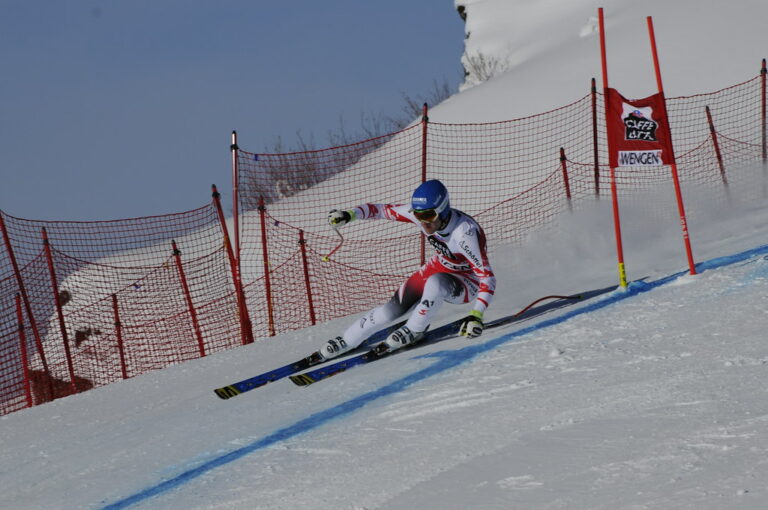General Rules of Ice Speedway
To race in ice speedway, you need experience and physical and mental preparedness. Safety on the track is crucial; wear proper gear for protection. Understand the ice, select the right tires, and adapt to changing conditions. Master cornering techniques for control and speed. The races consist of heats and finals; intense competition awaits. Safety protocols are strict, starting procedures precise. Equipment standards guarantee a fair race. Points determine the champion. Learning the general rules is essential for participating in this thrilling sport. If you want to excel, grasp these fundamental rules of ice speedway.
Rider Requirements
To compete in ice speedway events, riders must meet specific eligibility criteria. Rider qualifications play a vital role in determining who can participate in these high-speed competitions. Riders are required to have prior competition experience to make sure they can handle the intense nature of ice speedway racing. This experience not only hones their skills but also prepares them for the challenges they will face on the icy track.
In addition to competition experience, physical fitness is a key requirement for riders in ice speedway events. The extreme conditions and high speeds demand peak physical performance from all participants. Riders must possess the strength, agility, and endurance necessary to navigate the icy track with precision and control.
Furthermore, mental toughness is another essential trait for riders in ice speedway competitions. The ability to stay focused, make split-second decisions, and remain calm under pressure are critical for success in this demanding sport. Riders must be mentally prepared to handle the adrenaline rush and intense competition that comes with racing on ice.
Track Regulations
Now that we've covered rider requirements, let's shift our focus to the pivotal points of track regulations. Understanding safety gear requirements, track surface conditions, and cornering techniques are imperative for mastering ice speedway. These key elements play a vital role in ensuring both rider safety and peak performance on the track.
Safety Gear Requirements
Ensuring the safety of all participants, the track regulations mandate specific safety gear requirements for Ice Speedway races. Riders must wear a sturdy helmet to protect their head in case of falls or collisions. Gloves are essential to maintain a good grip on the handlebars and protect the hands from the cold and potential injuries. Additionally, proper boots are necessary to guarantee stability and ankle support while maneuvering the icy track. Goggles are an important piece of equipment to shield the eyes from ice chips and provide clear vision amidst the freezing winds. Adhering to these safety gear requirements is essential for the well-being of riders and enhances the overall security of Ice Speedway events.
Track Surface Conditions
With the safety gear requirements in place, the focus shifts to evaluating the track surface conditions for Ice Speedway races. Ice preparation plays a pivotal role in determining the track's grip level and overall safety for riders. The choice of tire selection is paramount, as different tire types perform better on specific ice textures. Weather impact is a significant factor, as changes in temperature can alter the track conditions rapidly. Riders must adapt their race strategy accordingly, considering factors like ice quality and potential slippery spots. Understanding how the track surface conditions evolve during the event is essential for maintaining control and achieving best performance. By being attentive to these details, riders can make informed decisions that enhance their racing experience on the ice.
Cornering Techniques
When maneuvering the corners on an ice speedway track, understanding and following specific regulations is essential for maintaining control and optimizing performance. Lean angles play a significant role in maneuvering the corners efficiently. As you approach a turn, adjust your body position to lean the motorcycle towards the inside of the corner, allowing for better traction and stability. Speed control is equally important; entering the corner at the correct speed guarantees you can maintain the desired lean angle without losing control. Choosing between the inside line and the outside line depends on various factors, such as track conditions and competitors' positions. Mastering these cornering techniques will not only enhance your performance but also keep you safe on the challenging ice speedway track.
Race Format
When it comes to ice speedway racing, understanding the points system is vital for success. Points are earned in heat races and the final race, with each race offering a chance to accumulate points towards the overall standings. Knowing how points are awarded can give you a strategic edge in maneuvering the race format.
Heat Races
In an Ice Speedway event, heat races serve as the preliminary rounds to determine the starting positions for the main races. During these intense heats, the competition is fierce, and every rider vies for a top spot. Here's what you can expect during the heat races:
- Riders skillfully maneuver their bikes on the icy track, leaning into sharp turns with precision.
- Spectators cheer loudly, feeling the adrenaline rush as the racers speed by in a blur of colors.
- The roar of engines fills the air, creating a thrilling atmosphere for all fans to enjoy.
- Riders strategize, aiming to secure the best position for the final showdown.
With fan engagement at its peak, the heat races set the stage for an electrifying Ice Speedway event.
Final Race
The Final Race in Ice Speedway events follows a structured format that intensifies the competition to determine the ultimate victor. This race is the culmination of the event, where riders showcase their skills under immense pressure. The dramatic finish of the Final Race often leads to a thrilling conclusion, keeping spectators on the edge of their seats. The championship outcome hinges on this race, with the overall winner being decided based on their performance in this final showdown. It is not uncommon for an unexpected winner to emerge, adding an element of surprise and excitement to the event. The Final Race is where the true champion proves their worth, making it a highlight of any Ice Speedway competition.
Safety Protocols
In order to guarantee the safety of all participants, strict adherence to the designated safety protocols is essential during ice speedway events. Safety protocols and emergency response procedures are in place to establish a secure environment for both riders and spectators. Here are four key safety measures to be followed:
- Protective Gear: Riders must wear approved safety helmets, padded suits, gloves, and boots to minimize the risk of injury in case of a fall.
- Track Inspections: Regular inspections of the ice track are conducted to identify and repair any potential hazards that could jeopardize the safety of the participants.
- Emergency Medical Staff: Trained medical personnel and ambulances are stationed nearby to provide immediate assistance in case of accidents or injuries during the event.
- Fire Safety Measures: Fire extinguishers and firefighting equipment are strategically placed around the track to address any fire-related emergencies promptly.
Starting Procedures
Implementing precise starting procedures is essential for guaranteeing a fair and safe ice speedway race. Before the riders take to the ice, meticulous ice preparation and track maintenance are pivotal. The starting line must be level, free of debris, and provide equal traction to all competitors.
Flag signals play an essential role in the starting procedures of an ice speedway race. Race control uses flags to communicate with the riders, indicating when they should be ready, when to start, and if there are any issues during the race. It is imperative for riders to pay close attention to these signals to ensure a smooth and organized start.
Race control oversees the starting procedures, ensuring that all riders are lined up correctly and ready to begin. Any false starts or infringements are promptly addressed to maintain the integrity of the race. By following the designated starting procedures, riders can compete on a level playing field, enhancing the excitement and safety of the ice speedway event.
Penalty System
For a smooth and fair ice speedway race, understanding the penalty system is crucial. The penalty enforcement guarantees fair play and maintains the integrity of the competition. Here are some key aspects of the penalty system to keep in mind:
- Rule Violations: Any breaches of the ice speedway rules, such as crossing the track boundary or obstructing another rider, will result in penalties.
- Consequences: Depending on the seriousness of the rule violation, penalties can range from warnings to disqualifications, affecting a rider's position in the race.
- Penalty Enforcement: Penalties are applied promptly and consistently by race officials to uphold the standards of competition and ensure that all riders adhere to the regulations.
- Fair Play: The penalty system is designed to promote fair play and sportsmanship among riders, fostering a competitive yet respectful environment on the ice.
Understanding the penalty system not only enhances the racing experience but also highlights the importance of following the rules for the safety and fairness of all participants.
Equipment Standards
Understanding the standards for equipment in ice speedway racing is paramount to ensuring safety and performance on the track. Helmet specifications are strictly enforced to protect riders in the event of a crash. Helmets must meet specific safety standards, including impact resistance and chin strap requirements. Ice tire requirements are also vital for maintaining traction on the slippery surface of the track. Specially designed tires with metal studs are mandatory to provide grip and stability while maneuvering the icy corners at high speeds.
Uniform regulations dictate that riders must wear protective gear such as leather suits, gloves, and boots to minimize injuries in case of accidents. Bike modifications are allowed within certain limits to enhance performance, such as adjusting suspension settings and gearing ratios. However, modifications that compromise safety or fairness are strictly prohibited to maintain a level playing field for all competitors. Adhering to these equipment standards is essential for a successful and safe ice speedway racing experience.
Championship Points
To excel in ice speedway racing, mastering the system of Championship Points is essential for competitors seeking to secure their position in the standings. Understanding the point system and tiebreaker rules is critical for your success on the icy track:
- Point System: Points are awarded based on finishing position in each race, with higher positions earning more points. Consistency is key to accumulating points throughout the championship.
- Tiebreaker Rules: In case of a tie in total points between racers, tiebreaker rules come into play to determine the higher-ranked competitor. Factors such as race wins and head-to-head results may be considered.
- Scoring Discrepancies: Keep a close eye on your points tally to catch any discrepancies early on. Accurate record-keeping is crucial to ensure fair competition.
- Protest Process: If you believe there has been an error in the scoring, familiarize yourself with the protest process outlined in the regulations. Promptly addressing any scoring issues can potentially impact your standing in the championship.
Mastering the Championship Points system will give you a strategic advantage in navigating the competitive world of ice speedway racing.
Frequently Asked Questions
Can Spectators Bring Their Own Food and Beverages to Ice Speedway Events?
Yes, you can bring your own food and beverages to ice speedway events. However, make sure to check the specific picnic policies and beverage guidelines in place at the venue to guarantee a smooth experience.
Are There Any Restrictions on the Types of Tires That Can Be Used by Riders in Ice Speedway Races?
When it comes to tire regulations in ice speedway races, safety standards are paramount. Riders must adhere to specific guidelines to guarantee fair competition and protect themselves. Performance enhancements are restricted to uphold fairness and minimize environmental impact.
How Are Tiebreakers Handled in the Championship Points System?
In ice speedway, tiebreakers in the championship points system are vital. Overtime rules may come into play, and playoff scenarios could determine the ultimate winner. Understanding these intricacies guarantees a thrilling and fair competition.
Is There a Minimum Age Requirement for Riders to Participate in Ice Speedway Events?
You might find it shocking, but there is indeed a minimum age requirement for ice speedway events. Riders must meet age limits, have safety equipment, parental consent, and possibly undergo training programs for participation.
Are There Any Specific Rules Regarding the Design and Construction of the Motorcycles Used in Ice Speedway Races?
When it comes to the design and construction of motorcycles for ice speedway races, specific rules govern modifications. Safety regulations dictate the allowable changes to enhance performance while ensuring rider safety on the icy track.






